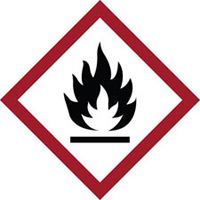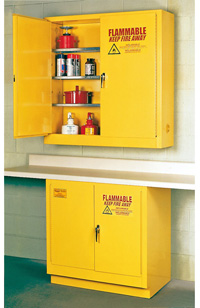| The Home page of ILPI's Safety Data Sheet (SDS) Resource, the leader in SDS information since 1995! | |
| The history and philosophy behind this resource. | |
| A curated collection of books and reference materials concerning Safety Data Sheets and closely related topics. | |
| Paste your plain text SDS into the SDS-Demystifier, and it will be converted into a hypertext-enriched document with links to detailed explanations of each key term. | |
| An extensive list of frequently asked questions about Safety Data Sheets including regulations, content, compliance, and more. | |
| A humorous take on Safety Data Sheet jargon. Fill in the blanks on our entry form to generate a personalized Unsafety Data Sheet to share with your coworkers. | |
| Since 1995, we've maintained this massive curated list of the best places to find Safety Data Sheets on the Internet. | |
| You are here! Way more than a glossary, this hypertext-enhanced resource covers hundreds of SDS-related terms and expert knowledge. Each entry includes both the SDS relevance and links to additional authoritative resources. | |
| Archived results of Safety Data Sheet related polls taken by some of our millions of site visitors | |
| The OSHA regulations behind SDS regulations, including the inspection guidelines and over 400 official interpretations letters under the Hazard Communication Standard | |
| Commercial suppliers of SDS authoring and management software as well as cloud compliance services. | |
| Commercial companies that will create SDS's for your specific needs as well as SDS translation companies. |

Safety signs, banners, and scoreboards? Get yours at Safety Emporium!
Definition
Under Appendix B of 29 CFR 2910.1200, the OSHA Hazard Communication Standard (HCS 2012), a flammable aerosol is defined as an aerosol which contains a flammable liquid, flammable gas or flammable solid but doesn't merit classification into one of those categories on its own and meets one of these following two criteria:
| Category | Criteria |
| 1 | Contains ≥ 85% flammable components and the chemical heat of combustion is ≥30 kJ/g; or
(b) For foam aerosols, in the aerosol foam flammability test (i) The flame height is ≥ 20 cm (7.87 in) and the flame duration ≥2 s; or (ii) The flame height is ≥ 4 cm (1.57 in) and the flame duration ≥7 s. |
| 2 | Contains > 1% flammable components, or the heat of combustion is ≥20 kJ/g; and
(i) Time equivalent is ≤300 s/m3; or (ii) Deflagration density is ≤ 300 g/m3 (b) For foam aerosols, in the aerosol foam flammability test, the flame height is ≥4 cm and the flame duration is ≥2 s and it does not meet the criteria for Category 1 |
An aerosol is a suspension of fine solid particles or liquid droplets in a gas. Examples are smoke, smog and tear gas. Compare this to the definitions of mist and dust.
An aerosol can also describe a container which dispenses a material that forms an aerosol as it is dispensed. OSHA defines such containers as "Aerosol means any non-refillable receptacle containing a gas compressed, liquefied or dissolved under pressure, and fitted with a release device allowing the contents to be ejected as particles in suspension in a gas, or as a foam, paste, powder, liquid or gas."
Additional Info

Flame pictograms and other GHS-compliant labels and signs are available from Safety Emporium.
Prior to the adoption of 2012 version of 29 CFR 1910.1200, the OSHA Hazard Communication Standard (HCS 2012), OSHA defined a flammable aerosol more simply as "an aerosol which is required to be labeled flammable under the Federal Hazardous Substances Labeling Act... For the purposes of paragraph (d) of this section, such aerosols are considered Class IA liquids."
Likewise, the previous version of the HCS defined a flammable aerosol as "an aerosol that, when tested by the method described in 16 CFR 1500.45, yields a flame projection exceeding 18 inches at full valve opening, or a flashback (a flame extending back to the valve) at any degree of valve opening;
HCS 2012 was adopted to bring US Safety Data Sheets into alignment with the Globally Harmonized System, thus the revised defintion is based on a globally accepted and scientific designation rather than by reference to US laws or less rigorous methods. Obviously, the HCS 2012 definition is much more unwieldy. In layman's terms, one could say a flammable aerosol is one that is easily ignited (catches fire) when exposed to a flame or spark.
The labeling provisions of HCS 2012 require that Category 1 or 2 flammable aerosol containers carry the flame pictogram (shown on the right) to provide a quick visual warning of the flammability hazard. The GHS does not require these symbols to appear on the SDS itself, however most responsible manufacturers will do so to preserve the correspondence between a substance's SDS and label.
Note: HCS 2012 is based on GHS Revision 3. Beginning with GHS Revision 4 issued in 2011, flammable aerosols were moved to aerosols and a new Category 3 was established for nonflammable aerosols. This issue is discussed in Section A.1 of CPL 02-02-079, Inspection Procedures for the Hazard Communication Standard in detail as well as a November 29, 2017 OSHA interpretation letter to Dell Tech Laboratories.
SDS Relevance

Store your aerosol cans safely with flammable storage safety cabinets from Safety Emporium.
The HCS 2012 alignment with the GHS established a standard 16-part format for Safety Data Sheets (SDS's). Section 9 of the SDS contains physical and chemical properties and flammability is one of those that must be listed. Additional information for flammable aerosols might also be found in other sections such as conditions to avoid, disposal considerations etc. but is not required.
Flammable aerosols can be quite hazardous. Use caution when using materials such as spray paints or aerosol solvents to avoid accidental ignition by a heat source or open flame. Some equipment may not be adequate to keep a flammable aerosol from flashing back into the container and result in an explosion or deflagration.
Most SDS's and fire safety experts recommend storing flammable aerosols in a flammable liquid storage cabinet. These are sold commercially by many vendors.
Further Reading
- View our entry on the National Fire Protection Association and its fire diamond codes.
- Visit the National Fire Protection Association home page for fire safety information, tips and codes.
- This OSHA interpretation letter discusses flammable aerosol use with respect to OSHA 29 CFR 1910.107 and NFPA 33.
- Managing Aerosol Cans: Safe Use in the Workplace at EHS Daily Advisor.
- GHS Compliance Spotlight: Aerosols Under WHMIS 2015 And OSHA 2012 at ERA Environmental.
- Safety Insight - Aerosol Testing - Aerosol Flammability Classification and Testing at Dekra.
- How to Work Safely with Hazardous Products Using the "Flame" Pictogram at the Canadian Centre for Occupational Health and Safety (CCOHS).
See also: flammable, flammable gas, flammable limits, flash point.